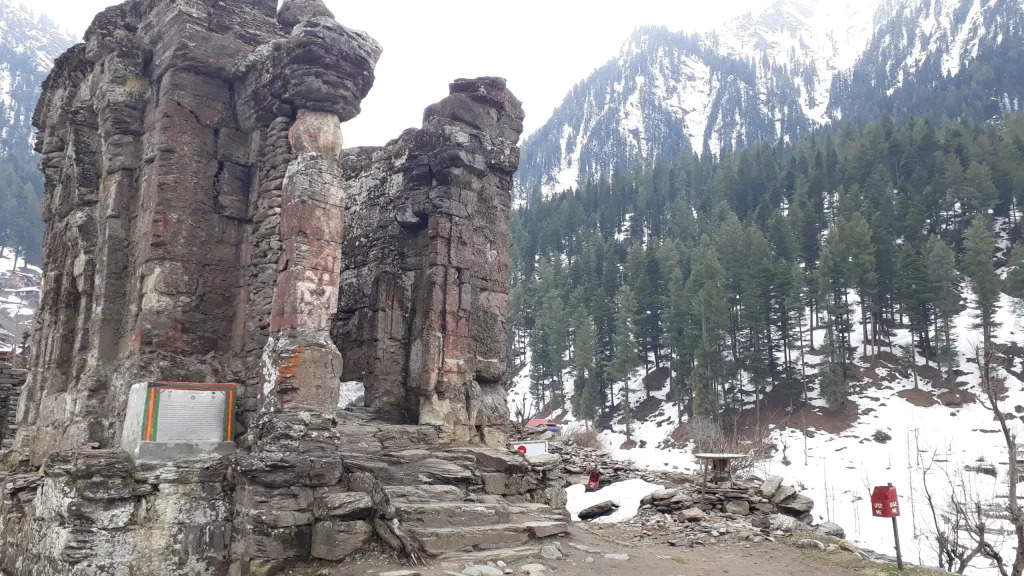Top 10 Hindu Temples In Pakistan

The All Pakistan Hindu Rights Movement conducted a survey, which revealed that there were only about 20 Hindu temples in Pakistan out of the 428 that had existed before. These temples have been the target of numerous attacks like the 1992 riots, the 2014 Larkana temple attack, the Ghotki riots of 2019, and the Karak temple attack in 2020.
Many of the temples have been transformed into mosques, hotels, libraries, and other uses, or have been demolished. As a result of these attacks, the idols of gods and goddesses have gone missing, ponds formerly used for holy baths have dried up, and the temples have fallen into disrepair. These temples are in desperate need of repair and restoration, and are quickly disappearing. Despite this, some of the temples are still visited by a large number of pilgrims.
Although Hindus only make up a tiny 2.14% of Pakistan's population according to the 2017 census, the country still has many Hindu historical sites. In this article, we shall examine the top 10 most remarkable Hindu temples in Pakistan.
1. Shri Hinglaj Mata Temple
Shri Hinglaj Mata Temple, also known as Nani Mandir, is one of the most prominent temples in Pakistan. During Hinglaj Yatra, it attracts around 250,000 pilgrims. Located in the Balochistan region, it is one of the three Shakti Peeths in Pakistan, the other two being Shivaharakaray and Sharda Peeth.
2. Shivaharakaray
Close to Karachi, Shivaharakaray is home to the worship of the goddess Sati as Mahishasurmardini, the destroyer of the demon Mahishasur. It is said that the third eye of Devi Sati came to rest in this area.
3. Sharda Peeth

Sharda Peeth, located near Muzaffarabad, is now in a state of disrepair. According to the Puranas, this is where the right hand of the goddess Sati fell. This site is only 10 kilometers away from the Line of Control separating India and Pakistan.
4. Churrio Jabal Durga Mata Temple
The Churrio Jabal Durga Mata Temple is a shrine that symbolizes the triumph of righteousness over wickedness and it draws around two hundred thousand worshipers during the observance of Mahashivratri.
5. Ramapir Temple, Tando Allahyar
The Ramapir Temple in Tando Allahyar is another stunning addition to the roster of Hindu temples located in Pakistan. Each year, the temple sees an abundance of devotees during the annual Ramdev Pir mela festival. It was constructed in 1859.
6. Shri Katas Raj Temple
Shri Katas Raj Temple, also known as Qila Katas, is of great significance. It is a complex of Hindu temples connected by walkways in the Punjab region of Pakistan, and is revered as the place where Lord Shiva is worshipped. According to Hindu mythology, the pond surrounding the temple was formed by Shiva's tears when his wife died. It is also believed that the Pandavas spent a considerable amount of time at the temple during their years of banishment.
7. Umarkot Shiv Mandir
The Umarkot Shiv Mandir, otherwise known as the Amarkot Shiv mandir, is the most ancient temple in Sindh Province. This temple is home to a majestic Shiv Lingam and during the three-day Shivratri festival, it sees a great number of devotees arriving to pay their respects.
8. Shri Swaminarayan Mandir
The Shri Swaminarayan Mandir in Karachi, Pakistan is one of the most prominent Hindu temples in the country. It was utilized as a refugee camp during the 1947 partition and was visited by Pakistan's founding father, Muhammad Ali Jinnah.
9. Manshera Shiv Temple
The Manshera Shiv Temple, situated in Khyber Pakhtunkhwa, is believed to have been constructed somewhere between 2000 to 3000 years ago, making it one of the oldest Hindu temples in Pakistan. It has drawn the attention of pilgrims from both within the country as well as from foreign countries. In the 1830s, the Raja of Jammu put in effort to restore the temple, however, in 1947, it had to be sealed and abandoned. Fortunately, the Hindus reclaimed it in 1998 and it has been partially restored, so it is enjoying a revival.
10. Shri Panchmukhi Hanuman Mandir
This invaluable temple is located in Soldier Bazar, Karachi of the Sindh Province. It is approximated to be about 1500 years old, and is the sole temple in the world with a natural statue of Lord Hanuman. It has a great spiritual importance as it is believed that Lord Rama visited this place during his time in exile. After that, a statuette of Panchamukhi Hanumanji was discovered from the spot and later on a temple was built.



